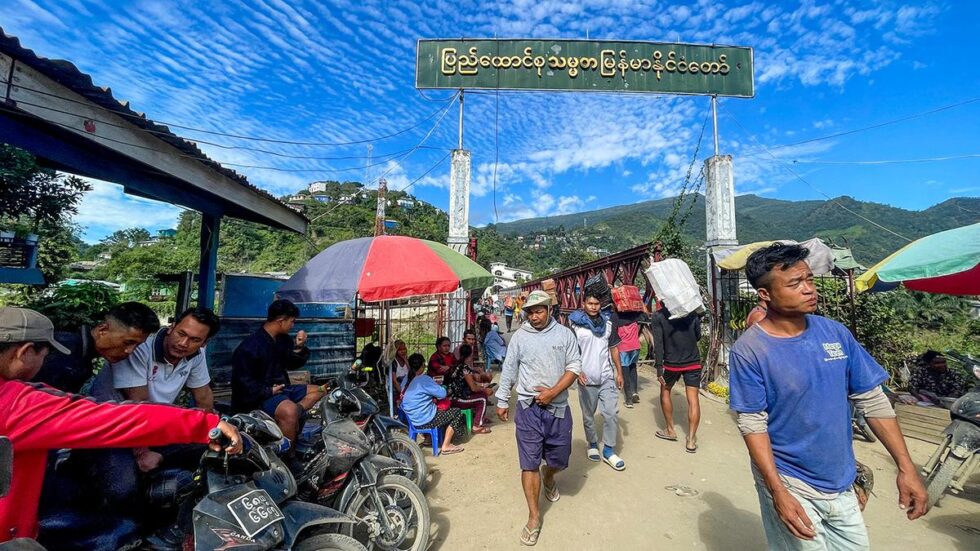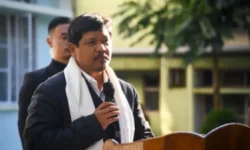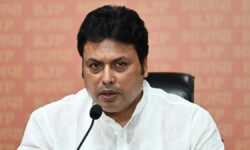
GUWAHATI:
Manipur’s United Naga Council (UNC) has sought the reinstatement of the Free Movement Regime in the Naga areas on either side of the India-Myanmar border, and the rollback of seven districts created in 2016.
In a memorandum to Manipur Governor Ajay Kumar Bhalla on May 2, the UNC said the decision of the Ministry of Home Affairs to scrap the Free Movement Regime (FMR) in February severed the deep historical, cultural, and familial ties of the Naga communities straddling the 1,643 km long India-Myanmar border. The memorandum was signed by the organisation’s president Ng. Lorho and general secretary Vareiyo Shatsang.
The FMR allowed any member of a hill tribe who is a citizen of either India or Myanmar, and resides within 16 km of the border on either side, to cross the border on the production of a border pass, and stay up to two weeks per visit. Such a pass was valid for a year.
The UNC said the scrapping of the FMR had affected the Tangkhul, Anal, Moyon, Lamkang, and Maring Naga communities who live along the border from the Ukhrul to Chandel districts in Manipur and the Sagaing Division in Myanmar.
The UNC noted that the amended Passport (Entry into India) Rules of 1950 and the India-Burma Treaty in 1952 allowed the members of the hill tribes to move within 40 km of the border without visa restrictions for socio-economic reasons. It said the boundary was delimited and demarcated in 1967 without the informed consent of the impacted people.
Attempts to address the historical injustice to the Nagas led to the FMR, which underwent periodic revisions until January 18, when the border residents of both countries were allowed to move freely up to 16 km from the boundary line and stay up to 72 hours without visa restrictions.
“Our livelihoods are significantly interwoven with cross-border interactions,” the UNC said, pointing out that the scrapping of the FMR and push for a border fence violated Article 36 of the United Nations Declaration on the Rights of Indigenous Peoples, 2007. Although India did not sign the declaration, it voted in favour of its adoption in 2007.
Article 36 states: “Indigenous peoples, in particular, those divided by international borders, have the right to maintain and develop contacts, relations and co-operation, including activities for spiritual, cultural, economic and social purposes, with their members as well as other peoples across borders.”
Affecting wildlife
The UNC said that the abrupt ending of the FMR and the construction of fencing “on the pretext of security reasons, proliferation of arms smuggling and drugs, and influx of illegal immigrants” was an attempt to further bifurcate the indigenous Nagas.
The organisation said the fencing in an 80 km stretch of the border in the Naga-dominated areas of the Chandel and Tengnoupal districts would violate international environmental laws, including the Convention on Migratory Species, which requires migratory routes to be protected. “Such fences not only affect people, but also wildlife… by blocking seasonal migrations of large animals, reducing genetic and species diversity…” it said.
The lopsided narrative of the governments of India and Manipur to end the FMR and construct the India-Myanmar border fencing has displeased many frontier communities, the UNC said, underscoring the need to reinstate the FMR and drop the fencing plan.
Stakeholders ignored
The UNC said the Naga stakeholders were ignored when the Okram Ibobi Singh-headed Congress government created seven districts in December 2016. Apart from keeping the Naga people in the dark, the move dishonoured four memoranda of understanding between the government and Naga groups, and an assurance from the Centre in 2011 to maintain the status quo.
The seven districts the Naga groups are opposed to are Jiribam, Kamjong, Kakching, Tengnoupal, Noney, Pherzawl, and Kangpokpi. These were carved out of the Imphal East, Thoubal, Ukhrul, Senapati, Tamenglong, Churachandpur, and Chandel districts, respectively.
The Nagas rejected the creation of these districts by holding demonstrations at the headquarters of the Naga-majority districts on December 15, 2016, and enforcing a 139-day economic blockade on two arterial national highways connecting Imphal to the rest of the country.
“…the UNC finds it imperative to highlight the unresolved issue of district rollback, particularly in light of the increasingly violent geographical contestations between conflicting parties in Manipur,” the organisation, representing all Naga tribes of the State, said.






